Sequence of the beatification process of the Servant of God, Father John Mary Haw
In the call of sanctity Father John Mary Haw died at the age of 78, on 28 October 1949 in the mother house of the St John’s missionaries, the Christkonigshaus, in Leutesdorf. When the Archbishop of Trier, Dr Franz Rudolf Bornewasser, received the news of his death by telephone, he answered: “Well, he has waited a long time for this and will be happy that he is now in heaven. For we can certainly assume that.” He was buried on 3 November in the Olberg kapelle in Leutesdorf. Because he was considered as a saintly Priest, the then bishop of Trier ordered his body to be placed in a zinc coffin. The numerous letters of condolence on the death of the Servant of God Father John Mary Haw refer to his holy life rather than his apostolic activities, the two communities that he has founded and the St John’s League.
Plenty of written letters have reached the two religious communities that through the intercession of Father John Mary Haw their prayers were heard. It is a proof that Fr John Mary Haw enjoyed the call to holiness in life, at death and after death. One year after the death of the Servant of God, Father John Mary Haw, in 1949, the first outline of his life and work was presented by Prelate Stephan Berghoff, prison-pastor. This was followed by other presentations. More biographies were there, among others by the successor of Father John Mary Haw, Fr Peter Appel. In 1966 Pastor Paul Mons from Bad Bergzabern, published an illustrated-biography about Fr John Mary Haw.
The Diocesan Stage of the Canonization Process
Its purpose is to collect evidence, under the responsibility of the bishop. Evidence may include the writings of the Servant of God, deeds, testimonies, hospital reports and expert opinions. The “Call of Holiness” continued after Father John Mary Haw’s death. In Leutesdorf a “Fr Haw” archive was established, so that the documents about him and his work are kept there. The diocesan official at that time, Msgr Dr Albert Heinz, under Bishop Dr Mathias Wehr (1951-1966), began from 1963 to 1979 with the interrogation of witnesses who had testified to the death of Father John Mary Haw had known him personally. Those protocols are part of the Documents for the Cause of Fr Haw. After the sudden death Msgr Dr Albert Heinz in 1981 his successor Rev Dr Nacken continued this work. ...
In the meantime Dr Bernhard Stein was the Bishop of Trier (1967 – 1980). Between October 1989 and March 1990 numerous interviews were conducted. With the letter of 12 January, 1993, the then Bishop of Trier, Dr Herman Josef Spital (1981 – 2001), requested the Congregation for the Causes of Saints in Rome for the “Nihil Obstat,” that is for permission to the official opening of the canonoziation process for Father John Mary Haw. On 26 January 1993, the Secretary of this Congregaion requested that a documented biography of the Servant of God be sent. When the health condition of the Official Dr Nackaen and the Postulator Fr Johannes Weber MSJ deteriorated, they could no longer fulfill this request. The work for the canonization process of Father John Mary Haw gone to a dormant stage.
The initiation of proceedings for the beatification of Father Haw made it necessary to provide a scientific biography about him and it was prepared by the Historian Professor Dr Joachim Schmiedl, Vallendar, Germany. Soon after the death of Father John Mary Haw, the Sisters of St John the Baptist and Mary the Queen and by the Missionaries of St John the Baptist, both Congregations founded by him, made continued efforts to initiate a process for the beatification of their founder. But due to the death of the responsible persons, it was delayed.
2007 Initiates the beatification processes of Father John Mary Haw with the Bishop of Trier
In February 2007 the then Superior General of the Missionaries of St John the Baptist Fr Augustine Molzberger MSJ and the Superior General of the Sisters of St John the Baptist and Mary the Queen, Sr Veena Punnackapallil to the Bishop of Trier with the request to initiate the process of beatification of Fr John Mary Haw. Sr Celeste Goncalves was sent to Rome to study theology, law, history and aggiography in the Congregation for the Causes of Saints and Beatifications. Thus she learned how the beatification process of Father John Mary Haw to be proceeded. Fr John Ambach MSJ was nominated as the postulator of the diocesan process. ...
Between 2008 and 2009 the seat of Bishop in Trier was vacant. The auxiliary Bishop Robert Brahm was appointed as diocesan administrator of the diocese of Trier. On 27.09.2008 he confirmed the two religious orders as actors (petitioneers) in the proceedings. The opening of the process had to wait until the new bishop took up his office. The diocesan administrator, however, ordered new commission to interview the eye witnesses and appointed a trial commission: consists of the episcopal plemnipotentiary, the promoter of Justice, the Notary Officers Council and the Notary.
Dr Stephan Ackermann, was presented with the “Supplex Libellus” (the request) to open the process. On 19 June 2009 the diocesan bishop presented the Nihil Obstat to the Holy Chair of the Congregation for the Causes of Saints and Beatifications in Rome. On 14 June 2010 the Vatican has confirmed the Nihil Obstat( no objection).
On 16 July 2010, the Bishop of Trier presented the consultation of the German Bishop’s Conference on the matter of the cause of Haw. The opinion of the Bishop’s Conference was unanimous and favourable. On the same day the diocesan bishop ordered the faithful to inform about the Cause of Haw in the Diocesan Official Bullet. On 2 September 2010, the Theological Commission, three experts, was formed to examine the collected published writings of Father Haw. The reviewers are to judge, independently of each other, whether there is anything in the writings that is contrary to faith or morality. On 24 November, 2010, Bishop Dr Stephan Ackermann constituted the Historical Commission for the Cause of the Servant of God Father John Mary Haw. Specialized historians and specialists in the field of archives also collected other historical documents which are necessary for the historical-critical reconstruction of the life, activity, death and virtues of Father John Mary Haw.
Bishop Dr Stephan Ackermann ordered the opening of the process on 7 January 2011. The first meeting took place on 2 March 2011 in the Vicariate General, Trier. The diocesan stage, normally takes three years. Nine sessions have taken place. 8000 documents were collected, of which Fr Johannes Ambach MSJ was appointed as postulator for the diocesan stage 1190 selected for the process, plus 1041 file pages of the Diocese of Trier. All pages were sealed and signed by the notary. Afterwards these pages were reproduced three times: The first copy is called “Transumpt” and is intended for the archives of the Congregation of Rome. Another copy the “Copia Publica,” is for the study of the Cause in the Congregation. The third copy remains in Leutesdorf and serves for the study putting up his “Positio.” The orignal is in the diocesan Archive in Trier, which no one may open without the permission of the Bishop.
On 8 October 2014 the final meeting took place. The Bishop, his delegate, the Church’s lawyer and the notary signed and sealed the files and provided a declaration by the notary that all the files were complete and that all the legal regulations had been observed. Sr Celeste Goncalves CSJ was instructed to take the Transumpt and the Copia Publica to Rome, together with all other documents of the proceedings. Once the file goes to Rome, the Venerable person becomes the Servant of God. Now our Father Founder is known as the Servant of God. The diocesan stage of the trial was thus concluded. This event was celebrated in a Liturgical service of thanksgiving, Msgr Dr Georg Holkenbrink as the main celebrant, in the Church of the Hospice of St Irminen in Trier, with the Sisters of St John, Missionaries of St John the Baptist, members of St John’s League, benefactors, well wishers, faithful from all the Parishes where Fr Haw has rendered his service. During the completion of the diocesan phase of the beatification process of Father Haw on 8 October 2014, the main celebrant Dr Georg Holkenbrink said: “We pray that the Church may recognize the great works which God has realized in and through this man.” The musical arrangement was provided by the Choir group from Father Haw’s home town Schweich. A reliable and experienced staff of the St John’s League, Mr Eduard Gunter, drove all documents to Rome with great responsibility.
The Roman Stage of the Canonization Process
The materials of the diocesan process was submitted to the Congregation for Saints and Beatifications on 20 October 2014. The file materials comprises 7,386 pages and was bound in 28 volumes. On 27 March 2015 the Romanesque stage was opened. The canonical regulations for the process in Rome can be found in the Apostolic Constitution “Divinus Perfectionis Magister” of 25.01.1983. On 19.02.2016, after detailed examination, the degree on the validity of the diocesan stage was confirmed by the Prefect of the Congregation for the Causes of Saints, Cardinal Angelo Amato SDB. During the Roman stage, the Postulator must be based in Rome in order to facilitat contact with the Congregation for the Causes of Saints. Since we do not have a convent in Rome, the actors of the Cause of Father Haw were able to win Fr Dr Thomas Klosterkamp OMI and then appointed him as Postulator. Sr Celeste Goncalves as Vice-Postulator, who is in charge of the “Fr Haw Secretariat” in Leutesdorf and is responsible for the preparation of the Positio.
The Outstanding Steps in the Roman Stage of the Process
The Positio about our Father Founder John Mary Haw is the scientific book (700 – 800 pages), which is the presentation of the evidence shows whether Fr John Mary Haw lived virtuously. It includes a biography, the presentation of the historical background, the importance of Father John Mary Haw for the Church today, the synopsis of the testimonies, the presentation of the heroic virtues of Father John Mary Haw, his veneration by the faithful, his miracle. ...
On 24 June 2016 the Congregation for the Causes of Saints appointed Prof Dr Zdzislaw Kijas OFM Cong.as Relator of the Cause of Father Haw. His task is to guide and then present the development of the Positio. He gives advice to Sr Celest Gonclaves CSJ in compiling all the important documents and writing the Positio. At the moment the beatification process of Father John Mary Haw is at this stage.
The Position is examined first by the historical commission and then by a theological commission in the Congregation for the Causes of Saints in Rome. It is then evaluated by the College of Cardinals and Bishops of the Congregation. In the positive vote of the College of Cardinals and Bishops, the Holy Father confirms the “Heroic Virtures” of the Servant of God, Father John Mary Haw. From this day on, Father John Mary Haw is officially considered “worthy of veneration” (venerable). For the beatification, a miracle is required on the “intercession of Father John Mary Haw.” If such a miracle is performed, it will be considered as a sign of God for the beatification. Later, the examination will be carried out by experts, doctors and theologians in Rome.
If the miracle is recognized by the Holy Father after a positive vote of the Congregation for the Causes of Saints, the beatification can take place. With this public celebration, the Church confirms the holiness of Father John Mary Haw and permits his public ecclesiastical devotion to a limited circle. If after the beatification another miracle occurs, which is examined in the same way as in the case of the beatification, the canonization will take place. With the act of canonization, the cult extends to the Universal Church.
Update of the Message of Father John Mary Haw
The motivations and actions of Father John Mary Haw contain an actual and necessary message to society and to the Church today. He was a modern personality. He recognized the importance of the media for proclamation. (Jochiam Schmidel-Pioneer of the lay apostolate and lawyer of the stranded). Also Bishop Dr Stephan Ackerman writes, “What moved him and shaped his life is especially relevant in our time: the care of the addicted, the care for the homeless and those who failed in their lives, the apostolate of the sick, etc. Just as important as the social sphere was the deepening of the faith through Eucharistic and Marian piety and religious formation.”
Chronicle of the Beatification Process of the Servant of God, Father John Mary Haw
The religious superiors of the Missionaries of St John the Baptist and the Sisters of St John the Baptist and Mary the Queen wrote to the Bishop of Trier with the request for the beatification of our Founder, Father John Mary Haw.
Confirmation of the two religious Congregations as actors in the cause of Father Haw and approval of the nominated postulators by the Bishop of Trier.
Appointment of the officials (like a local court): Delegatus Episcopalis, Promoter of Justice, 1 notary (man) and 1 notary (lady).
Oath taking of the officials.
Beginning of the questioning of the contemporary witnesses of Father John Mary Haw (persons who still knew Father Haw - 25).
Supplex Libellus (the request).
The Bishop of Trier asks for the ‘Nihil Obstat’ (no objection) of the Holy See at the Congregation of ‘Causa Sanctorum’ in Rome.
Rescript on the granting of the Nihil Obstat.
Bishop of Trier places the request to the German Bishops’ Conference about the possibility of ‘Cause of Fr Haw’. He has received a positive answer.
Order to inform the faithful about the ‘Cause of Fr Haw’.
Publication in the ecclesiastical gazette of the diocese of Trier.
Order of the theological experts and defense.
Appointment of the historical commission.
Bishop orders the execution of the ‘Cause of Fr Haw.’
Session I - Opening of the ‘Cause of Fr Haw.’ <br>Oaths taking - of the bishop and officials appointed by him.
Session II - Questioning of contemporary witnesses.
Session III - Inspection of the places where the Servant of God lived and worked, especially the death chamber and the tomb.
Session IV - Interrogation of the Historical Commission; presentation of the Historical Commission’s report.
Collection of written evidence for the veneration of the Servant of God.
Declaration of Servant of God.
Decree of the bishop to postpone the exhumation (opening of the grave).
Closing of files and appointment of the copyist.
Session VII - Collation of the files.
Session VIII – Auscultation.
Order of the person who takes the files to Rome.
Session IX (final session) - Clock – thanksgiving mass in St Irminen, Trier.
Departure for Rome with the whole document.
Submission of the document to the Congregation for the Beatification and Canonization.
Opening of the files in Rome.
Meeting with the President of the Congregation, H.E. Cardinal Angelo Amato.
Decree on the validity of the diocesan phase.
The Congregation for the Causes of Saints has appointed Fr Prof Dr ZdzislawKijas OFMConv as Relator da Cause of Fr Haw.
Appointment of Fr Diego Sáez Martin OMI as Postulator for Rome (successor of Fr Thomas Klosterkamp OMI).







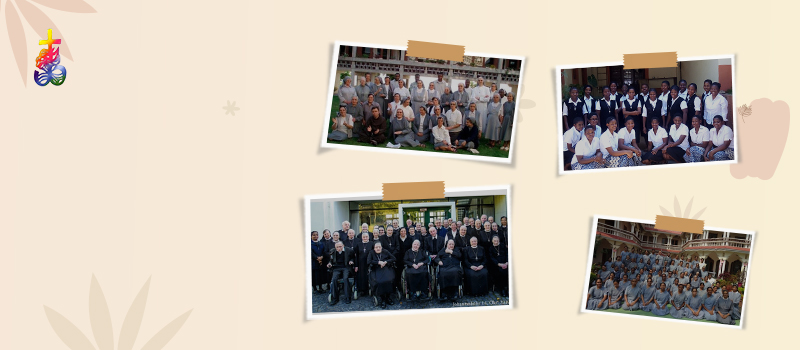
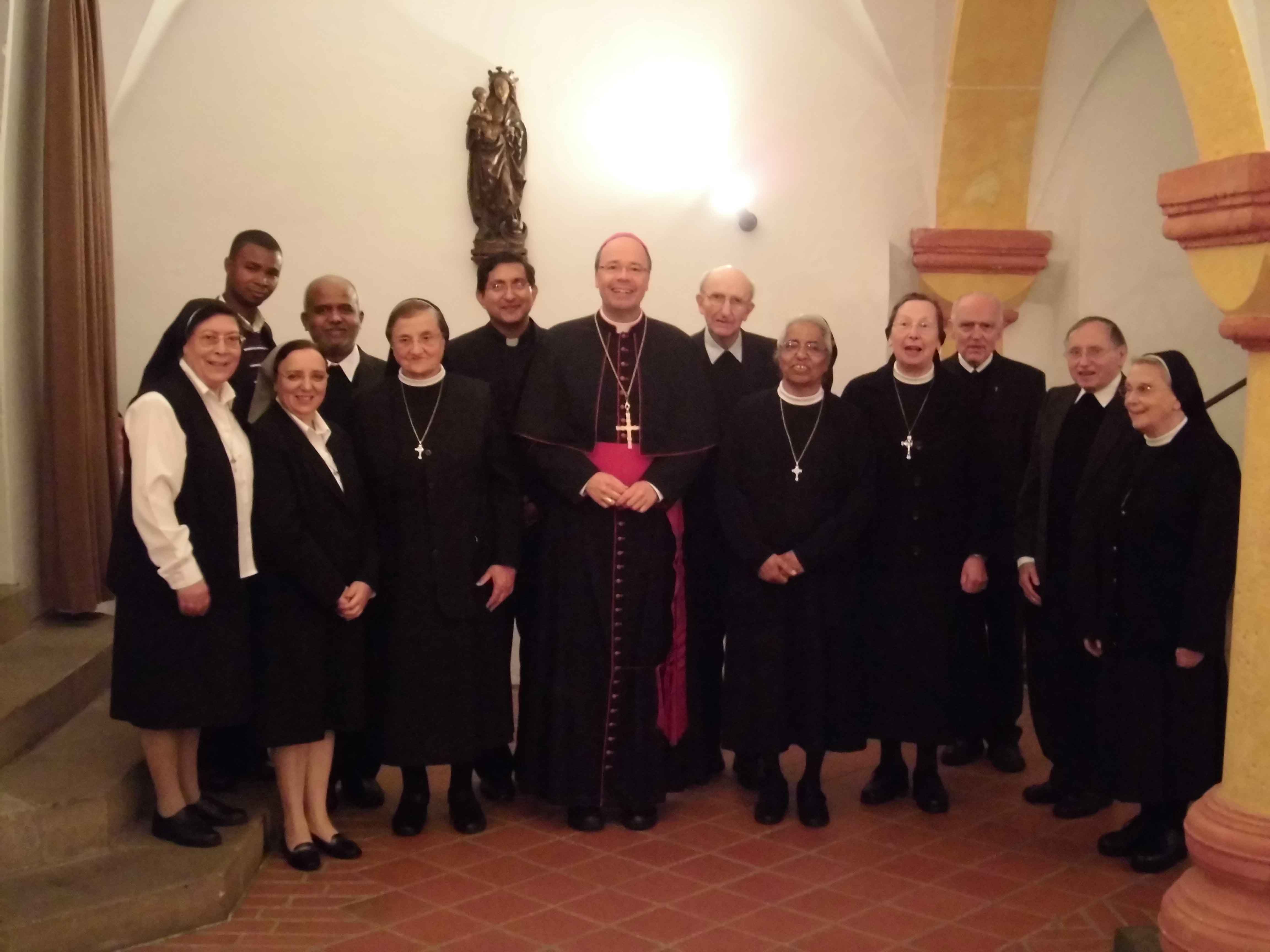
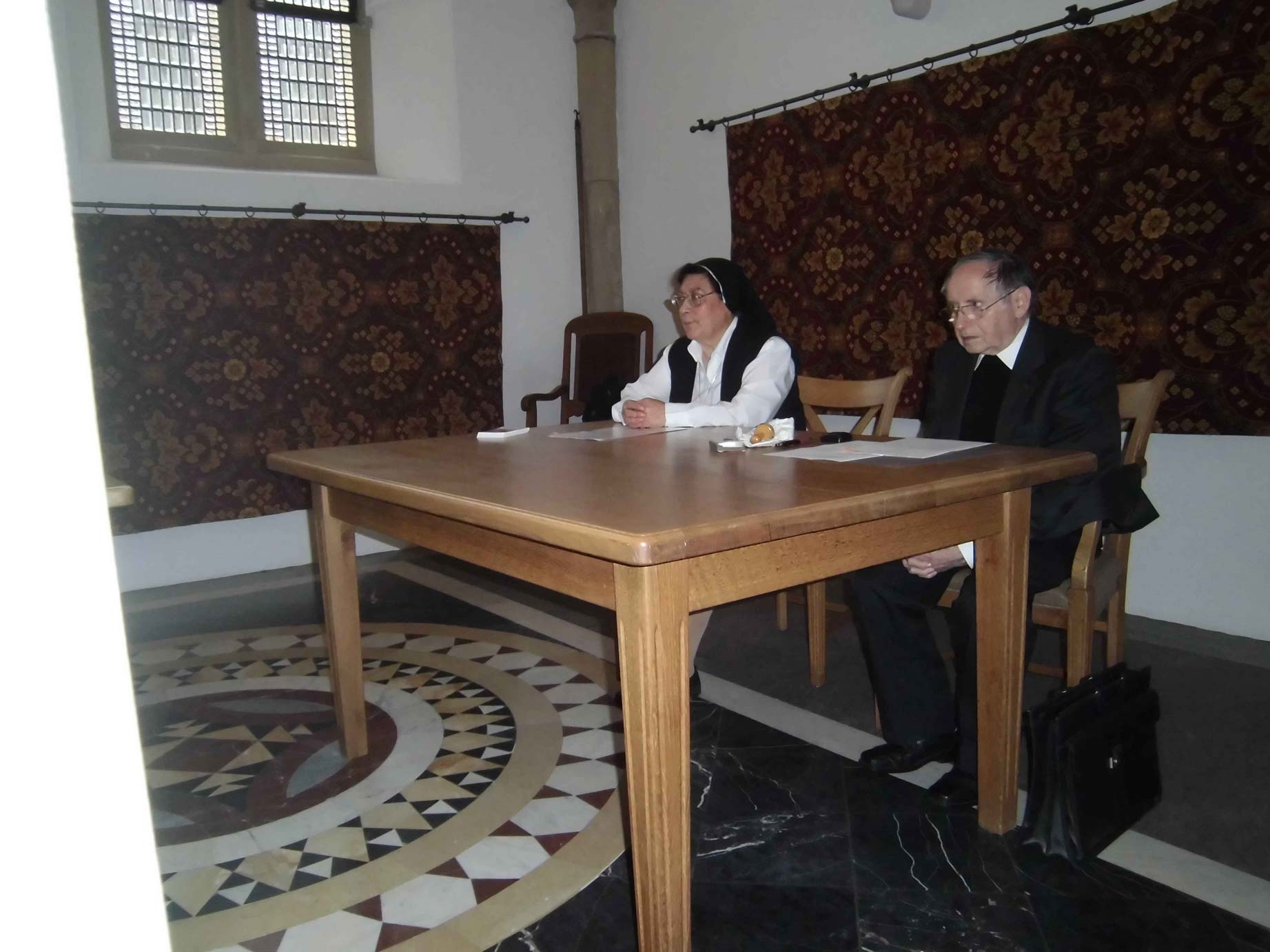
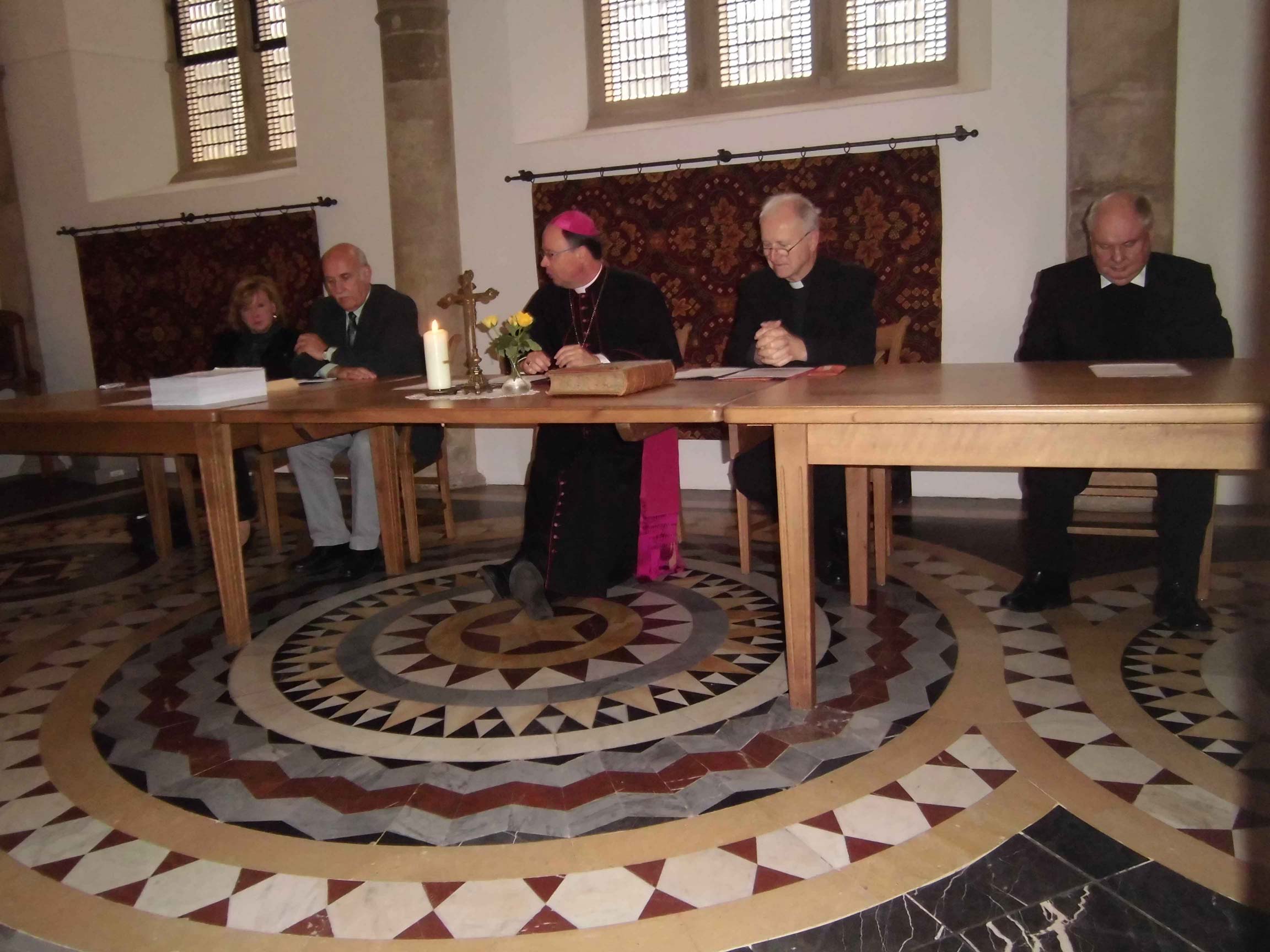
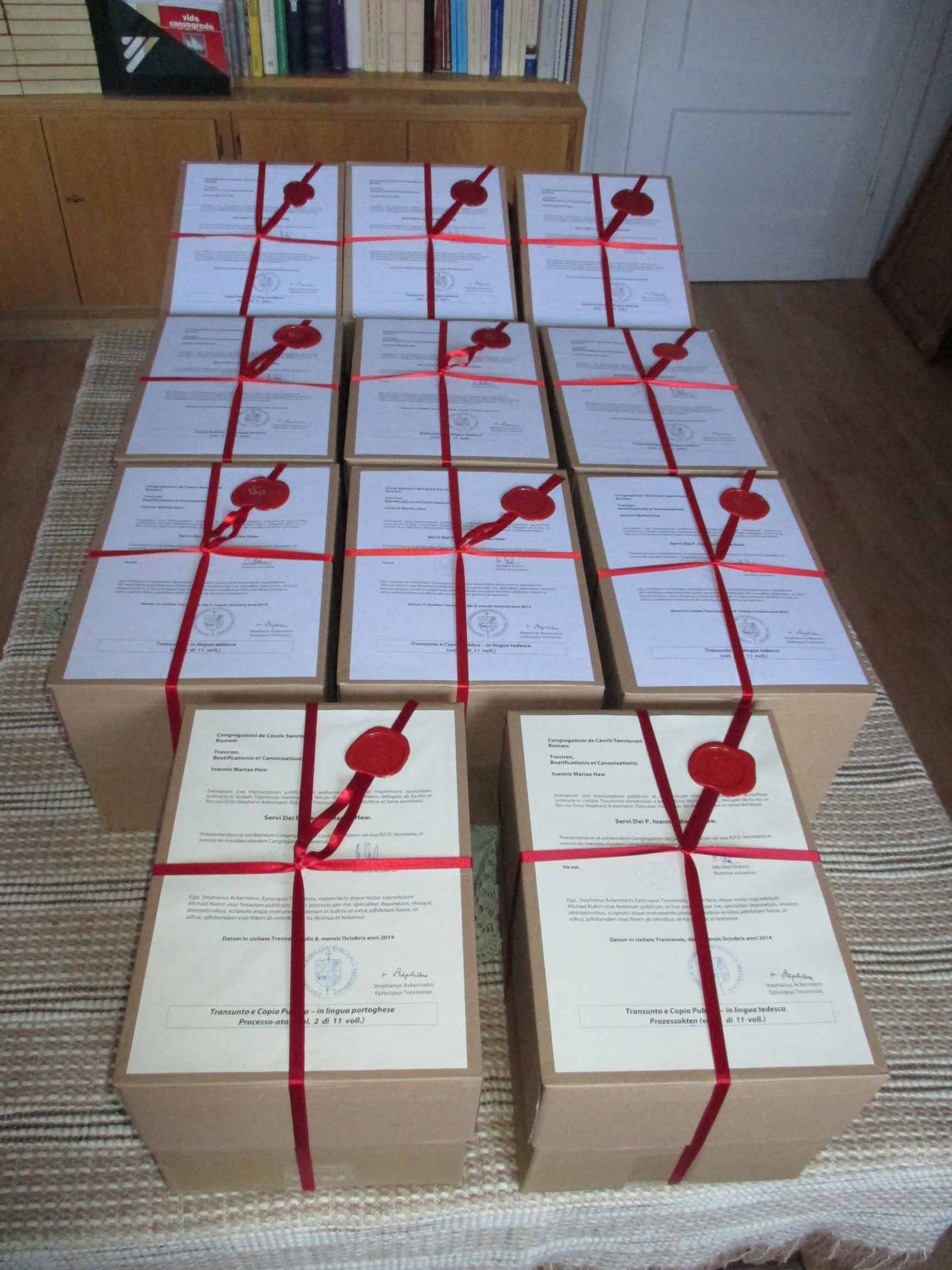
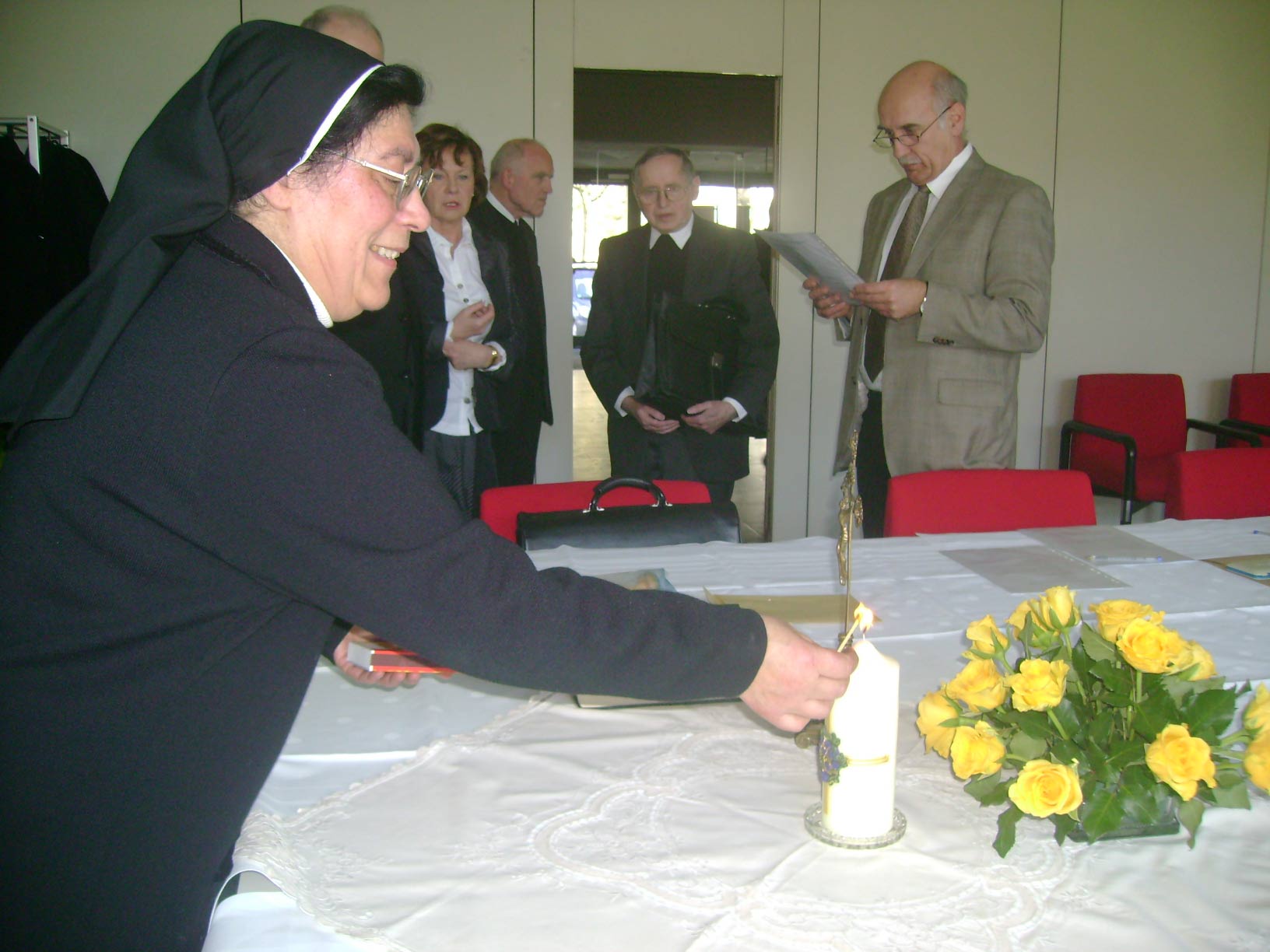
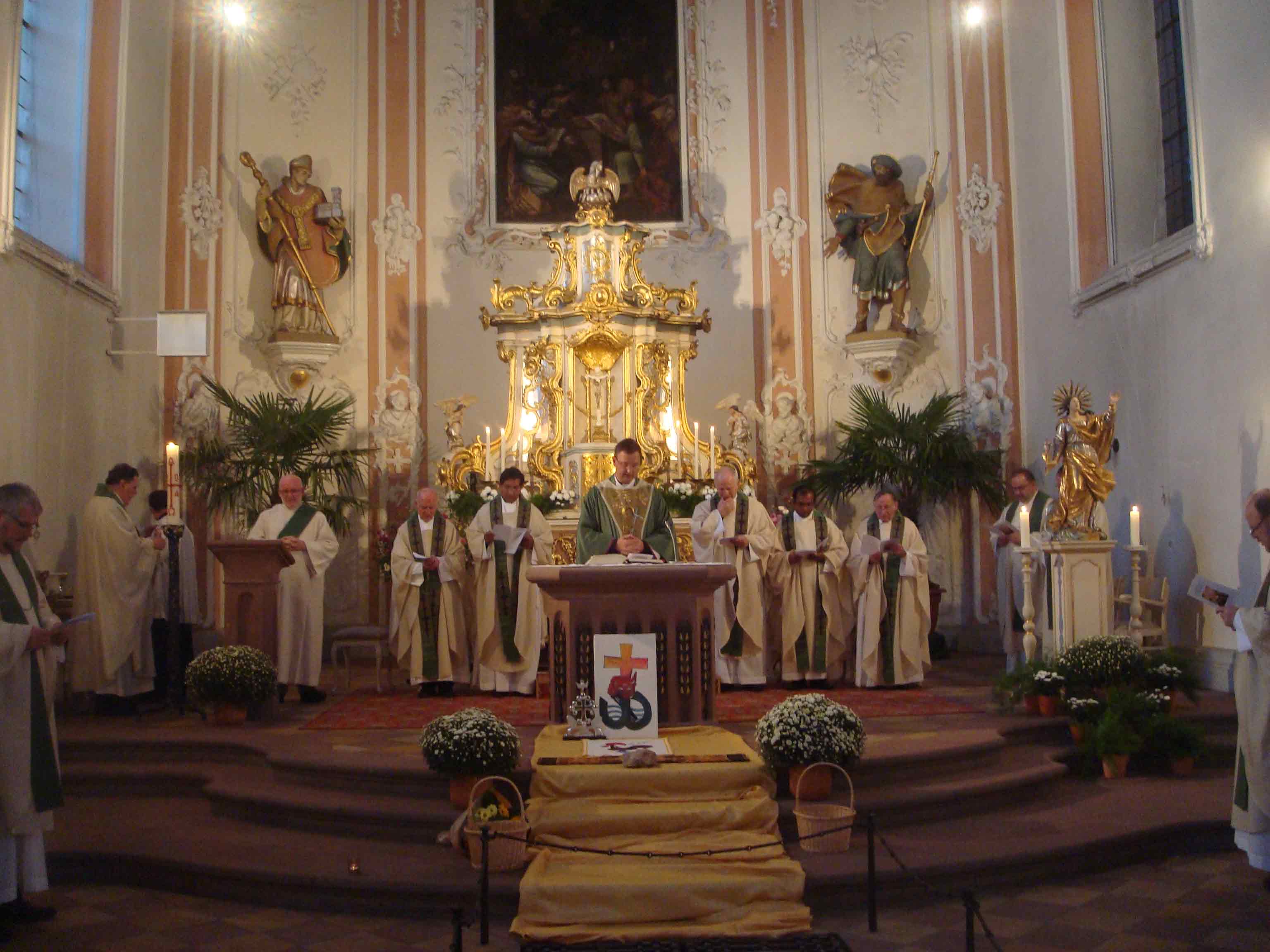

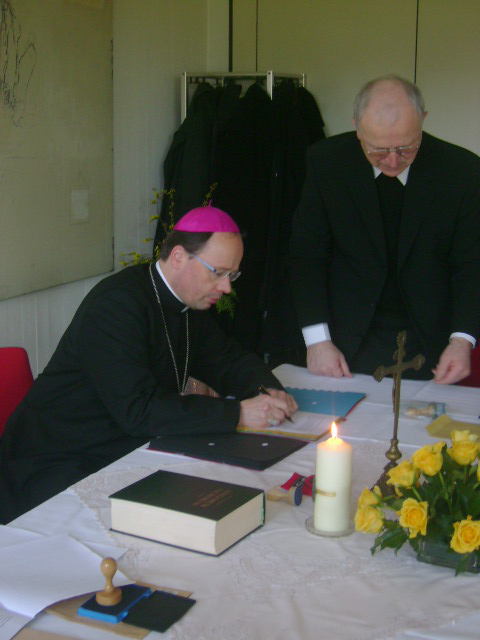
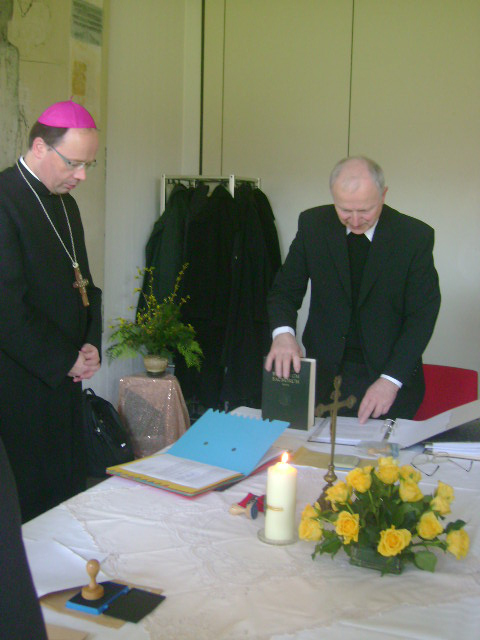
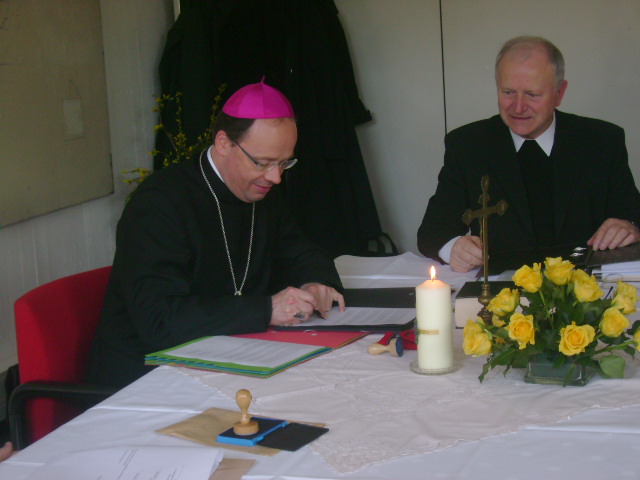
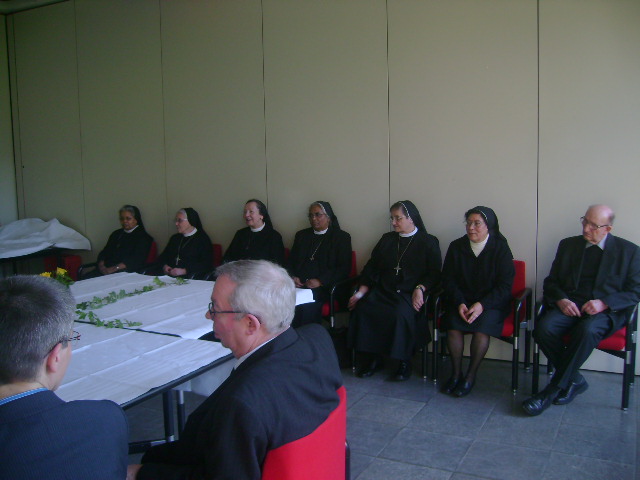
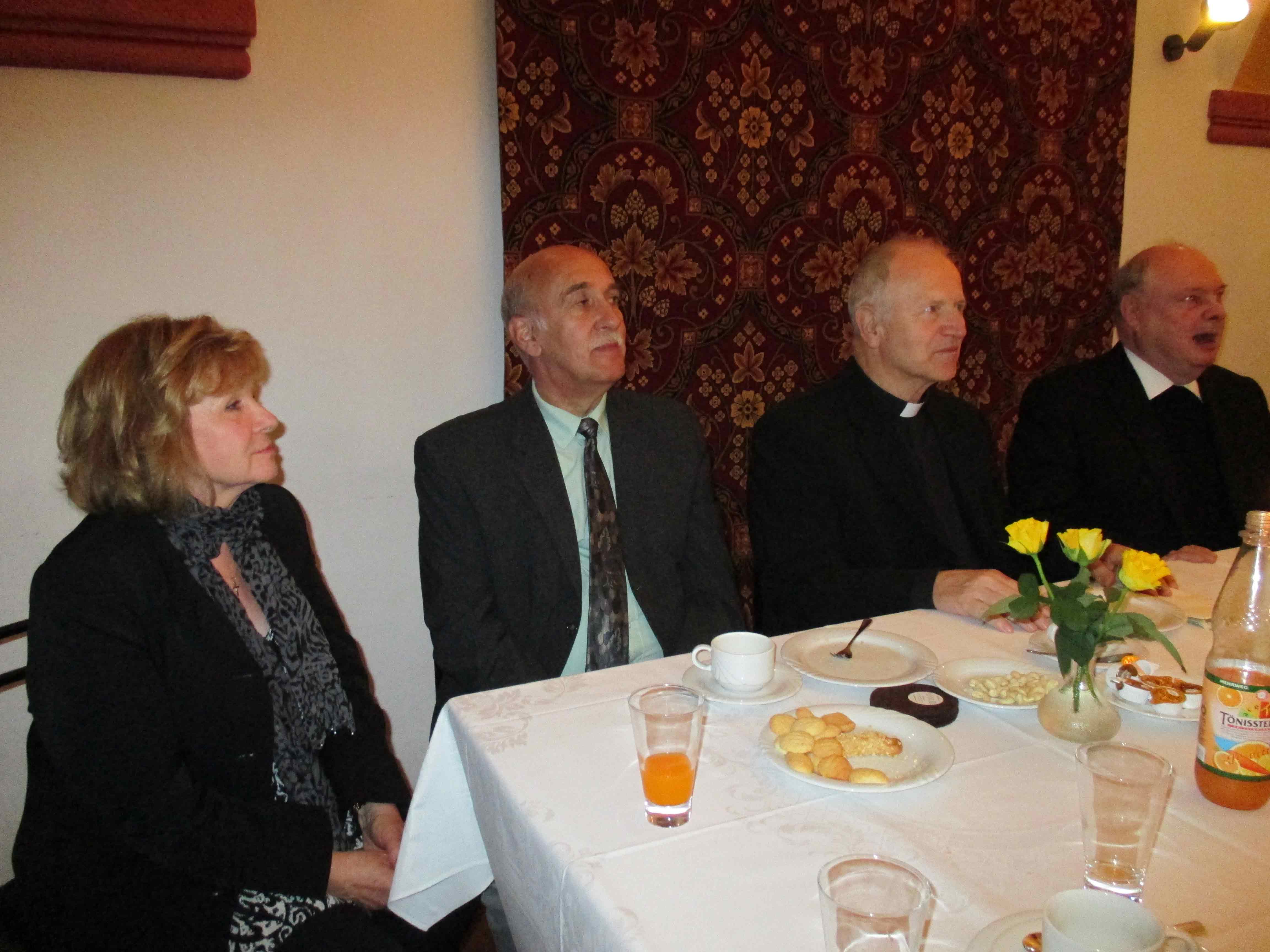
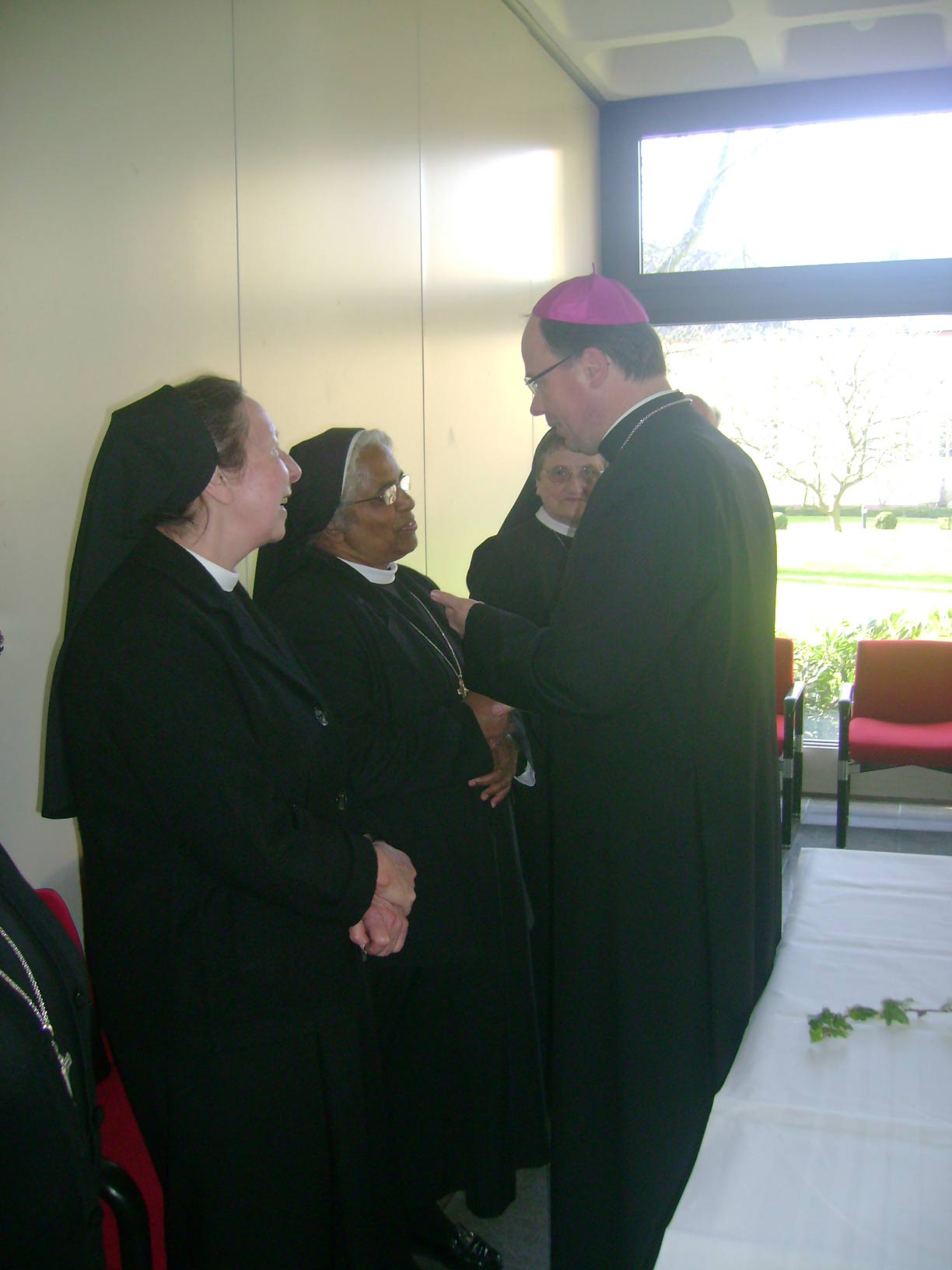
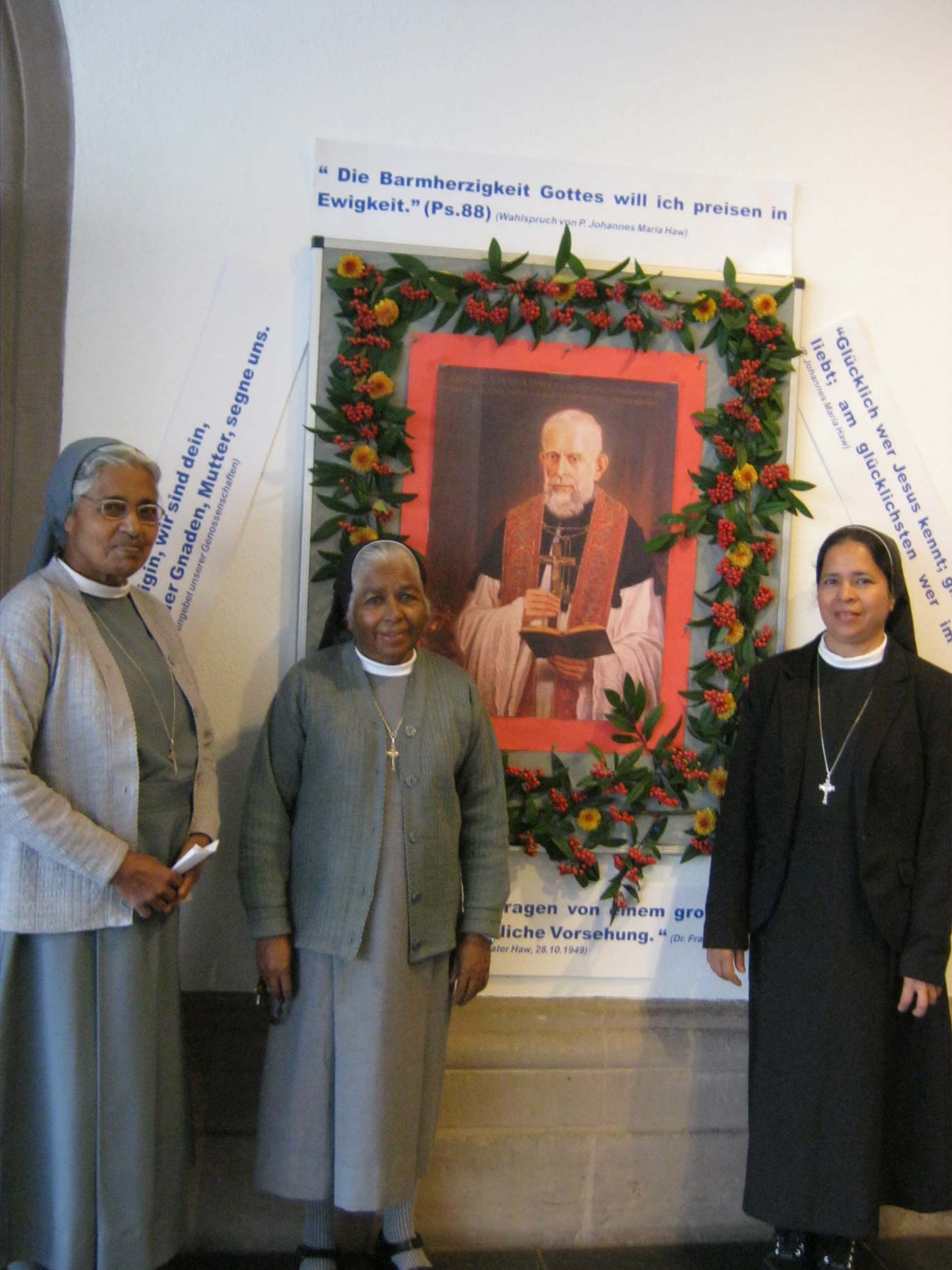
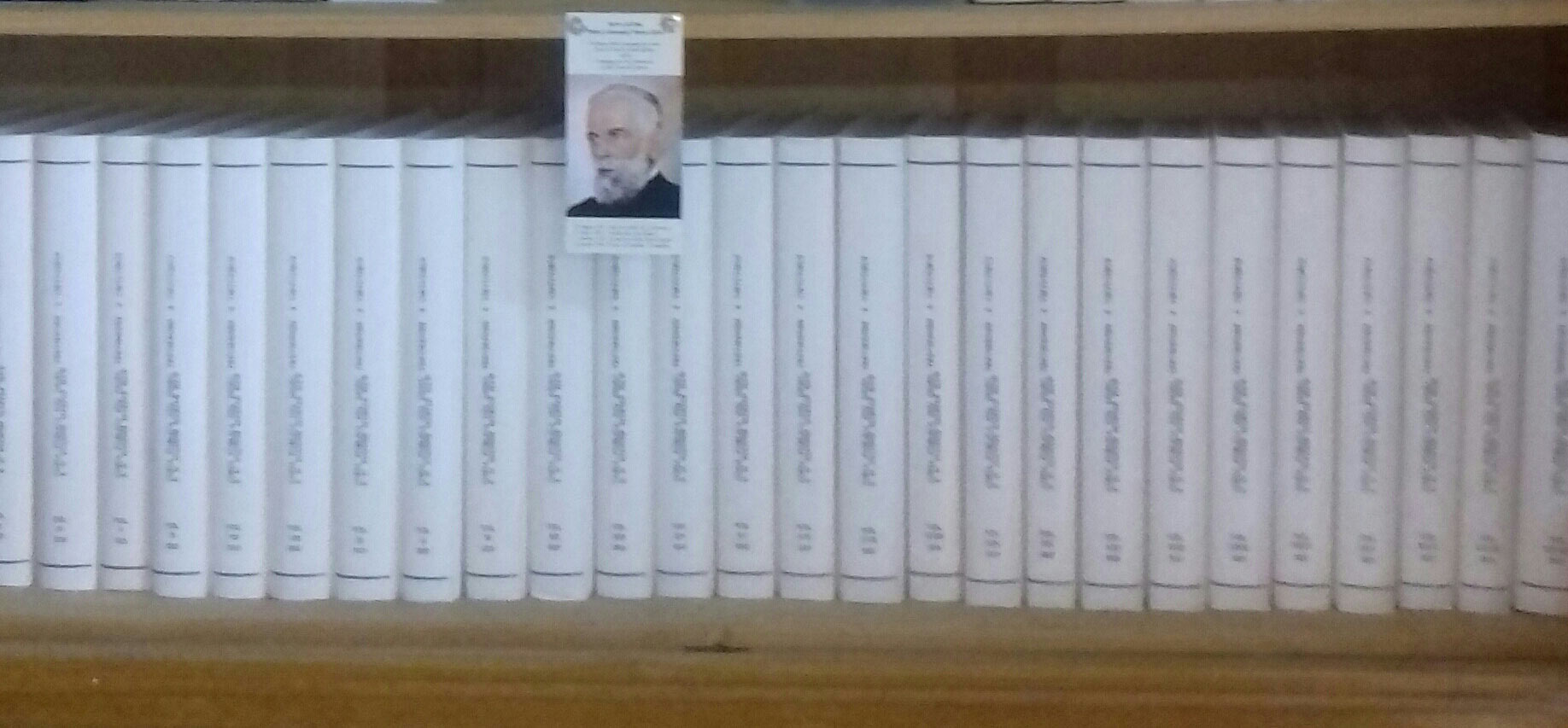

 English
English Portuguese
Portuguese